Football in America: Dallas, Where Everything is Bigger—Including Expectations
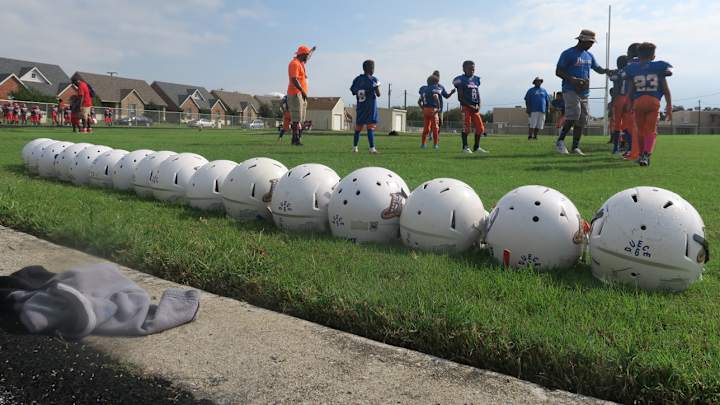
Welcome to The MMQB’s eight-part series, “Football in America,” in partnership with State Farm. We’ll take the temperature of the game at the youth, high school, college and NFL levels in a changing world, in eight locales across the United States. This week: Episode IV—Dallas, Fort Worth and Texas
Episode I: The Bay Area
Episode II: Carolina
Episode III: Minnesota
Video: John DePetro
Social/Photos: Kalyn Kahler
A TEXAS-SIZED MELTING POT
Pennington Field, Bedford, Texas
Friday, 7:30 p.m.
As you drive over a hill on Industrial Boulevard, approaching Trinity High in the town of Euless, an unmistakable object becomes visible over the horizon. It’s AT&T Stadium—a good seven miles away.
This is the land of billion-dollar NFL stadiums, and $60 million high school stadiums. So when Chris Jensen, the football coach at Trinity, describes their home venue as “pretty simple,” you have to put that in context.
Pennington Field is a concrete structure that was built in the ’80s. But it seats 12,000 fans; and has a standalone video board in one of the end zones that shows replays; and a press box with no less than 19 seats for college scouts, plus an elevator operator to take people up and down; and a Sports Hall of Fame on the concourse with plaques honoring the best to play in the Hurst-Euless-Bedford area (among them, former NFL head coach Dennis Allen). Only in Texas would this qualify as “pretty simple.”
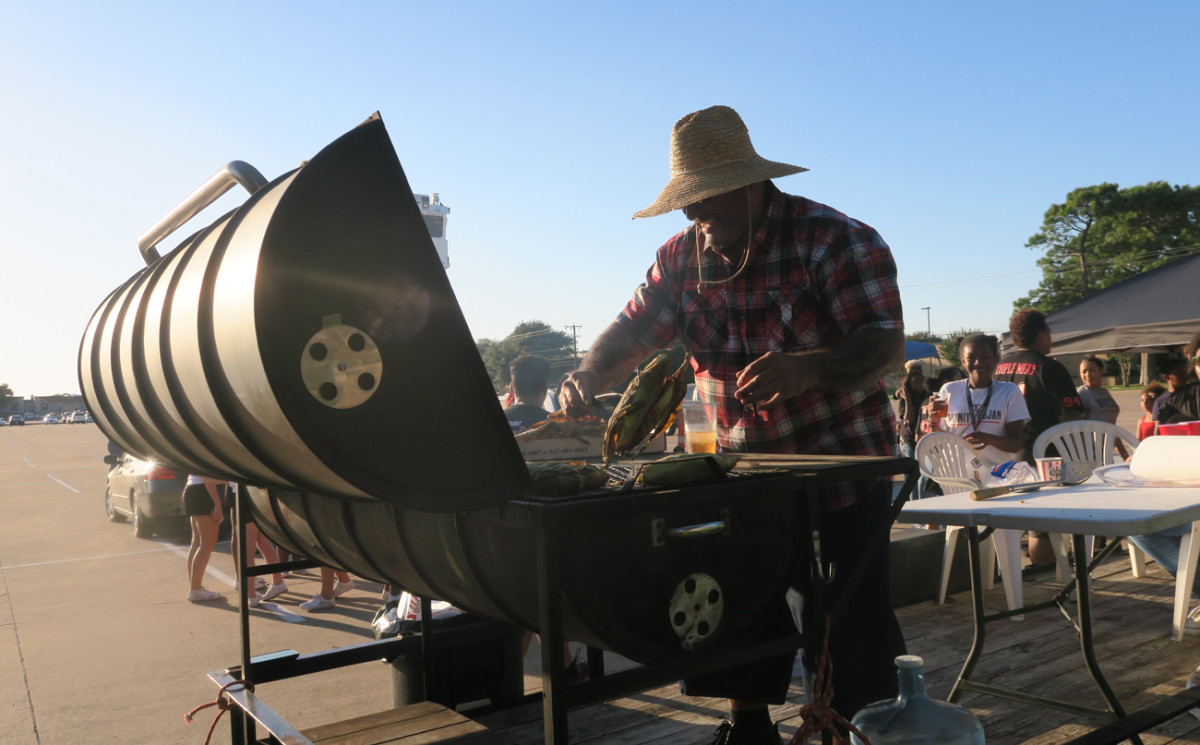
Trinity is hosting district rival Southlake Carroll in the “High School Football Game of the Week” on TXA21, the CBS affiliate in the Dallas/Fort Worth area. Each fall the station broadcasts a 20-game schedule of the best high school contests in the area. The interscholastic league requires the Friday night games to be broadcast on delay—a rule that feels akin to the NFL’s TV blackout policies—and they still draw somewhere between 80,000 and 110,000 viewers at 10:30 p.m. “It’s actually a good concept for tape delay,” says Elliott Moore, TXA 21’s sideline reporter for the game, “because people who are at the game can go home and watch it.”
There’s room for little else besides football on Friday nights here in the fall. Two hours before kickoff, a tailgate is roaring in one corner of the stadium’s parking lot. Junior Filikitonga, father to senior defensive end Izaiah Filikitonga and a member of the Hall of Fame inside the stadium, is grilling corn and stacking it in empty pizza boxes. The student section begins to fill up an hour before the game. A senior basketball player, who had surgery the day before on a broken fibula and tibia, showed up to the game to cheer on his classmates in a wheelchair with his injured leg resting on a pillow. “I couldn’t miss it!” he declares.
There’s history between these two schools, dating back to a playoff game 11 years ago that is still talked about in the greater Dallas area. Both teams were undefeated and collided in the district playoffs at Cowboys Stadium, where depending on whom you ask, the crowd size was between 40,000 and 60,000. Trinity lost after a failed fake punt that fans of both schools still refer to as “the fake punt heard ’round the world.”
Both schools have fallen off a bit since the era when they combined for 11 state championships. But, because of the history and the size of the schools—they are both class 6A, for the largest enrollments—this game is always a big draw. Football is a six-days-a-week sport for the players (Sunday is their only day off), and Jensen is a full-time coach who puts in an 80-hour work week. For Trinity’s season opener, a few thousand supporters drove four hours to an away game in Tulsa.
“Hello fans!” the PA announcer booms. “It’s Friday night, and that means football time in Texas!”
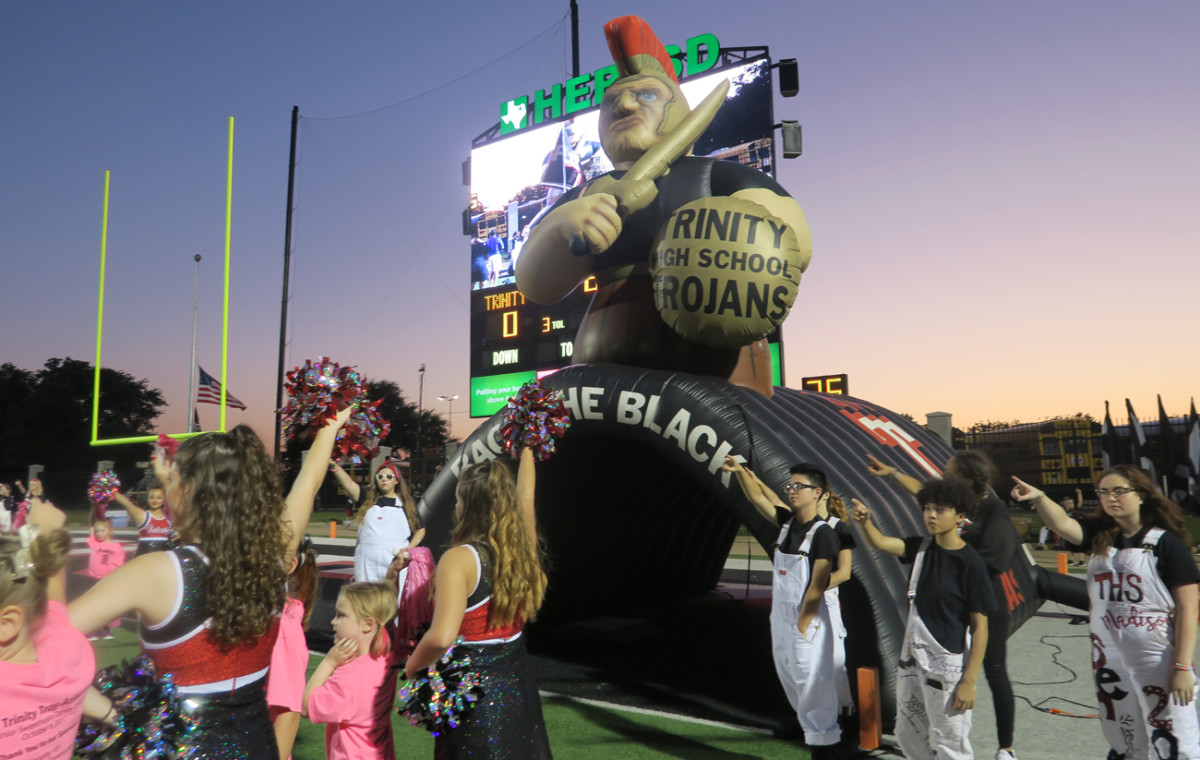
The teams don’t just run onto the field—they do so through inflatable tunnels. Trinity performs its famous pregame custom, the Sipi Tau. The 90 players on the team join together in a series of coordinated crouches, hand gestures and traditional Tongan chants. The team originally got the idea from the Maori war dance called the Haka, made famous by New Zealand’s All Blacks rugby team, but they’ve adapted it to reflect the Tongan heritage of much of the Trinity roster.
Trinity, which was built close to Dallas Fort Worth airport, is perennially ranked as one of the most diverse high schools in the country. About four percent of the student body is Tongan—and about 40 percent of the football team’s roster, including the entire starting defensive line. Esteban Larranaga, who is starting his second game at quarterback for Trinity, immigrated from Mexico with his parents when he was 3 years old. Says Jensen, “What we're proud of, especially these days when the world is a little bit of a mess in a lot of ways, is that we have this diverse population, and it works.”
Football in America: Bridging Communities in the Bay Area
Trinity falls behind 17-0 to Carroll after a sloppy first half, but the 30-minute halftime period that features drill teams rivaling the football roster in size, allows for plenty of time to regroup. “If everyone does their job, we’ll be straight,” shouts one assistant coach. “Don’t get down on your teammates, back them up!”
Running back Courage Keihn is the star of the second half, piling up two touchdowns. At each score, confetti blasts from the Trinity student section. With just under three minutes left, Trinity is down on the goal line, trailing by six points. That’s when Larranaga bursts behind his linemen into the end zone for a 21-20 lead. There’s 2:40 left on the clock, and Trinity needs one more stop.
Junior Filikitonga, who had a cup of coffee with the Cowboys in the 1990s, starts yelling to the Trinity sideline for them to run a 4-3 defense. He’s been shouting “4-3!” for much of the fourth quarter, in fact. To his great delight, Trinity’s defense is indeed lined up in a 4-3 on the deciding play of the game, a floating pass that’s picked off by cornerback Nigel Blount. Afterward, in between being mobbed by teammates, Blount points proudly to his red No. 13 jersey. “We wore red today, because everybody bleeds,” he says. “It just shows that it’s not about color at this school, it’s about who you are as a person.”
The Trinity students rush the field when the clock hits zero, and Larranaga finds his mother, who’s wearing a bedazzled “Football Mom” T-shirt. He lifts her high in the air. His dad grew up playing American football in Mexico but never dreamed his son would be the starting quarterback in front of a crowd quite like this. “One of the most exhilarating feelings of my life!” Larranaga says, breathlessly.
His plans to celebrate that night? Watching the tape-delay broadcast, of course.
LITTLE KIDS, BIG DECISIONS
Lamar Middle School, Irving, Texas
Saturday, 10 a.m.
The 4- and 5-year-old flag football game is played with a running clock. This is a necessity. Each team has two coaches out on the field, literally yanking the kids into the right position before the snap. It’s the first game of the day, and it runs long anyway—too many penalties.
“Let’s put it like this: I didn’t coach my own son in flag football,” teases Roland Jackson, who created the Irving BALLAS youth sports organization 16 years ago. “Now that I’m older, I have a little bit more patience.”
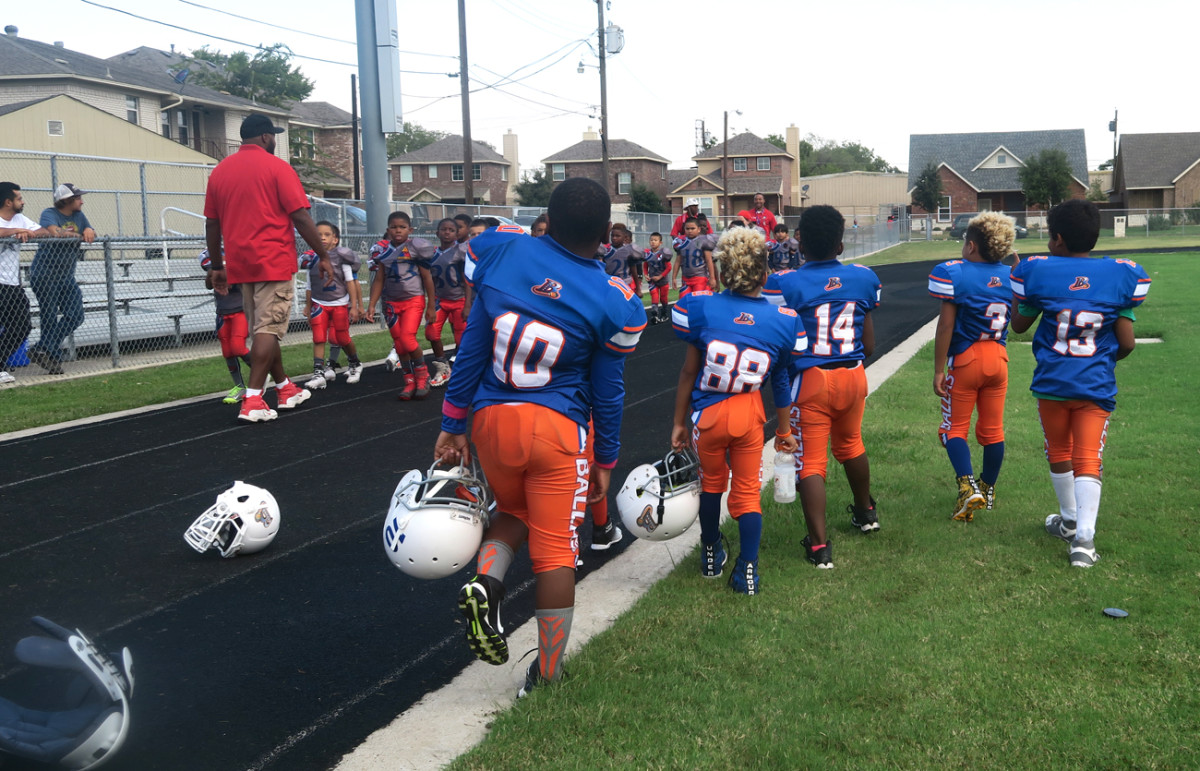
No matter—the bleachers are already starting to fill up, and the concession stand can’t keep enough Gatorades in stock. Today, Irving’s opponents are the Patriots, who travel in from Killeen, Texas, close to a three-hour drive away. The two clubs will play four games across four different age groups, from 4 up to 11, as morning turns into afternoon. The Patriots travel with a cheer squad for each age group.
Both teams are part of TYFA, the Texas Youth Football & Cheer Association, the same league featured on the first season of the reality show “Friday Night Tykes.” One parent explains that this is the NFL of little leagues, though the BALLAS are run like a neighborhood league, though one seeking better competition. Jackson founded the BALLAS—it stands for Believe And Love Lord And Savior—so that he could teach his nephews how to play football the right way.

Jackson played college ball at Southeastern Oklahoma State and was playing in the Arena League back when he started the program. Alan Walker, who coaches the 6- and 7-year-olds, was a defensive back at Kansas State. Most of the coaches grew up together in Irving and played for MacArthur High, and are now building a community through sports for their kids and their friends’ kids. If a boy is having trouble in school, they tell him to bring his homework to practice, and they’ll help him after. They pray together after every game. A sports organization like the BALLAS goes farther than just the field.
Last year, a little boy who wears No. 6 on the flag team lost his father. Meldrick Grice, nicknamed “Deuce,” was murdered at a Fort Worth apartment complex last October, a few hours before he was supposed to be coaching his son’s game (the case remains unsolved). This year Jackson stepped in as the flag coach, and Deuce Jr., continues to play, at running back. He and his teammates all wear orange wristbands in Deuce’s memory, and Walker carries to games a small bottle with Deuce’s ashes in his pocket. Walker even came up with a call on defense in Deuce’s name, a double blitz. “He’s got enough uncles that he’ll never need anything,” Jackson says.
Football in America: Building Tradition in Carolina
After the flag game finishes, the next age group up, the 6- and 7-year-old Tykes, take the field—after their coaches help them get their shoulder pads on. In this league, it’s tackle football once kids turn 6, which presents a hard decision for parents like Tamera Rhinehart, the director of the BALLAS organization. Rhinehart’s husband, Jacoby, played five years in the NFL as a defensive back with the Cardinals and then a few more years in the CFL, and was among the plaintiffs in the class-action concussion lawsuits filed against the NFL. He was initially against letting their 7-year-old son, Jaziah, play tackle. A research study published last month by Boston University pointed to increased behavioral and cognitive problems for kids who began playing tackle football before the age of 12.
The BALLAS coaches are certified through USA Football’s tackle training program, and Jackson says he’ll also take coaches and players to clinics at his alma mater. They’ve never had a player suffer a head injury, he adds. In some parts of the country, football participation rates are declining because of health and safety concerns, but a Wall Street Journal graphic earlier this year showed that the football hotbed of Texas was one state where participation was up.
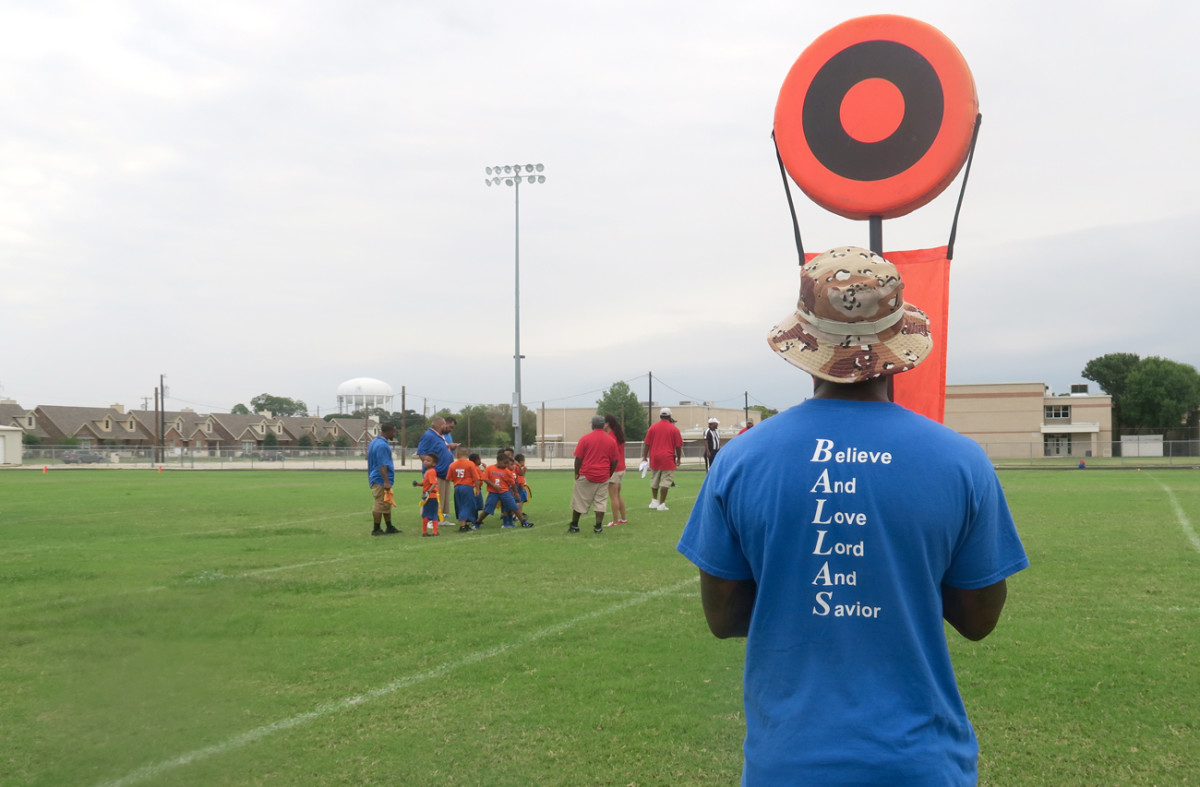
Jaziah’s teammate, 8-year-old Kymani Bryant, proudly declares that he’s wanted to play football for his entire life. His uncle is Antonio Bryant, the former NFL wide receiver who was drafted by the Cowboys; Kymani sports a dyed mohawk modeled after his favorite player, Odell Beckham, Jr. His mom, Lauren, hesitated about signing up him and his younger brother to play tackle football at age 6.
“It’s a little nerve-wracking being a mom; you worry about the hits. But at the same time, my kids love it, so I’m not going to take it from them,” she says. “Of course you’ve got all the research that shows the whole CTE thing, but football is still very prominent in the state of Texas. You’ve got a lot of kids who are starting this young, and it’s almost like you’ve gotta start this early if you want to be recognized in high school by colleges and stuff.”
THE BEST TEAM IN TEXAS
Amon G. Carter Stadium, Fort Worth
Saturday, 2:30 p.m.
LaDainian Tomlinson sometimes sneaks out at halftime to catch a flight to his NFL Network job in Los Angeles. Not today. The Hall of Fame running back, who has season tickets for his alma mater, stays until TCU quarterback Kenny Hill runs in for the winning touchdown with just under three minutes to play against West Virginia.
“Honestly, I feel like a father that has raised a son to be successful,” Tomlinson says, on his way out of the stadium. “To see where this place has come to now, it is a great feeling.”
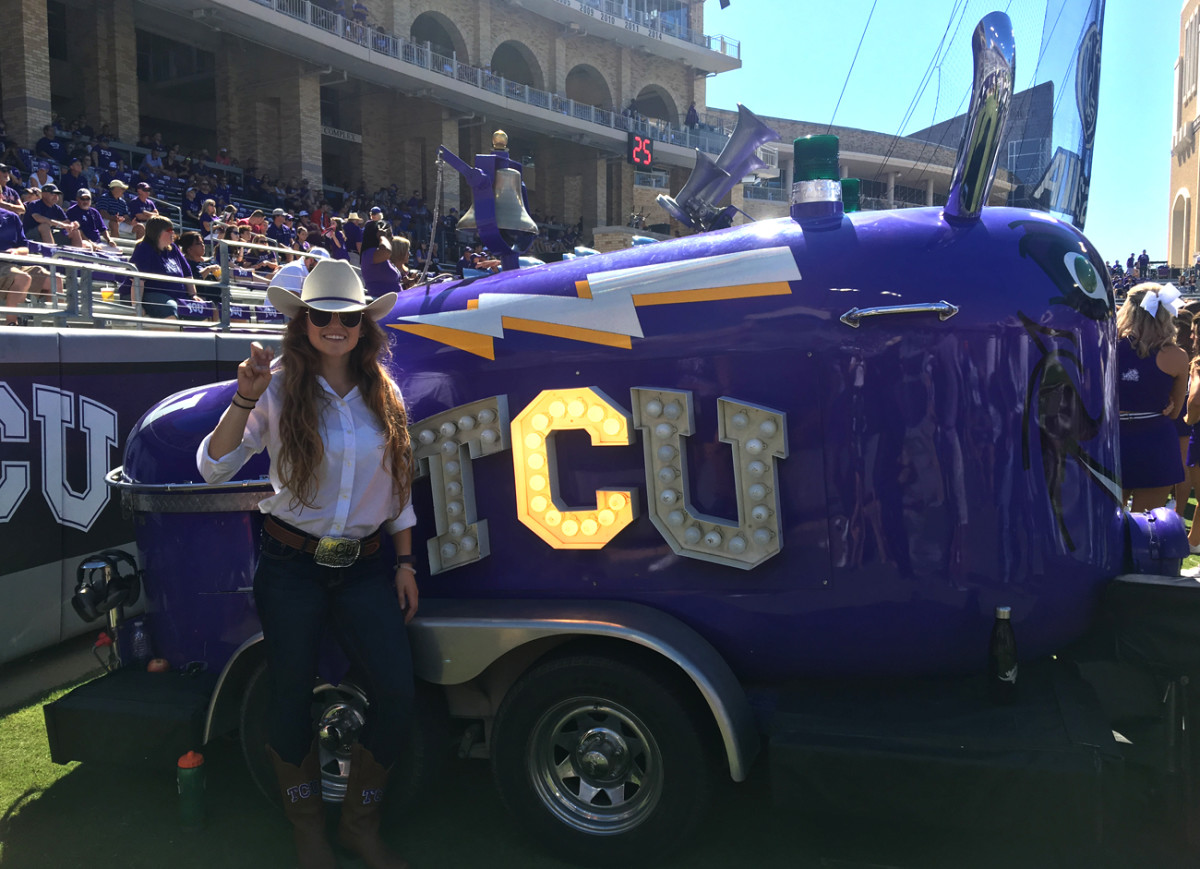
Tomlinson came to Fort Worth in 1997 from University High in Waco. Before he arrived, the Horned Frogs had been to just two bowl games in the previous 34 years, and in his first season they won a single game competing in the small Western Athletic Conference. “We were a program that was looking for identity,” Tomlinson says, “something we could hold onto and get back into the top 25.” Tomlinson was part of changing that—and on this clear October afternoon, he was enjoying the fruits of that transformation from his club seats looking out from one of the end zones.
ESPN’s “College GameDay” had broadcast live from campus earlier that day, set up across the street from the stadium in a quad between dormitories. By the time the sun set, TCU would stand as the only unbeaten team in the Big 12, with its 31-24 win over the Mountaineers.
“It’s what I always hoped for when I first came here,” says Tomlinson.
Coach Gary Patterson has shepherded the team over the last 17 years through its ascension to bigger and bigger stages—up from the WAC to Conference USA; then to the Mountain West, where in 2010 the Horned Frogs, with Andy Dalton, went undefeated in 2010 and finished No. 2 in the nation; and then in 2012 to the Big 12. TCU’s upset of then-No. 6 Oklahoma State in Stillwater two weeks before the West Virginia win shook up the conference standings and confirmed the school as serious contenders. Patterson is still riding the growth curve.
“Everybody else that’s been in the Big 12 has been recruiting over 12 or 15 years, however long they’ve been together,” Patterson says. We have only been doing it for five or six. We’ve just gotta keep building our reputation.”
The atmosphere at a TCU home game lags behind what you’ll find in Austin or College Station. The stadium holds just 45,000, and the Frog Horn that blares after each touchdown is multifold louder than the roar of the crowd. But the football, right now at least, is the best college ball in Texas—which is saying something.
Football in America: A Family Game in Minnesota
Not surprisingly, more than half the TCU roster is made up of players who went to high school in Texas. The state, because of its size and the depth of the football culture, usually turns out the most blue-chip prospects in nation. Asked what’s unique about being a head coach in Texas, Patterson does not hesitate: dealing with the high school coaches.
“The head coach is always going to be in his office,” he says. “The players are well taught, they come from having an offseason program and they are very well-educated about all of it. You have to do your due diligence when you deal with them. And they grew up playing in big stadiums. Highland is going to play in 40,000 or 50,000, so you’ve gotta understand that’s the kind of kids you are going to recruit.”
Kenny Hill, the quarterback, was a transfer from Texas A&M who played his high school ball at Southlake Carroll. He was getting text message updates from his mom during Friday night’s Carroll-Trinity game—“We were up 17-0 at the half, and y’all gonna lose?”—before Patterson and his staff took the players’ phones away the night before the game.
“Football in Texas, there’s nothing better than that,” Hill says. “To stay here, where football is king, it’s definitely a cool deal. Coach P keeps growing this thing [at TCU], and I think we can keep going with it.”
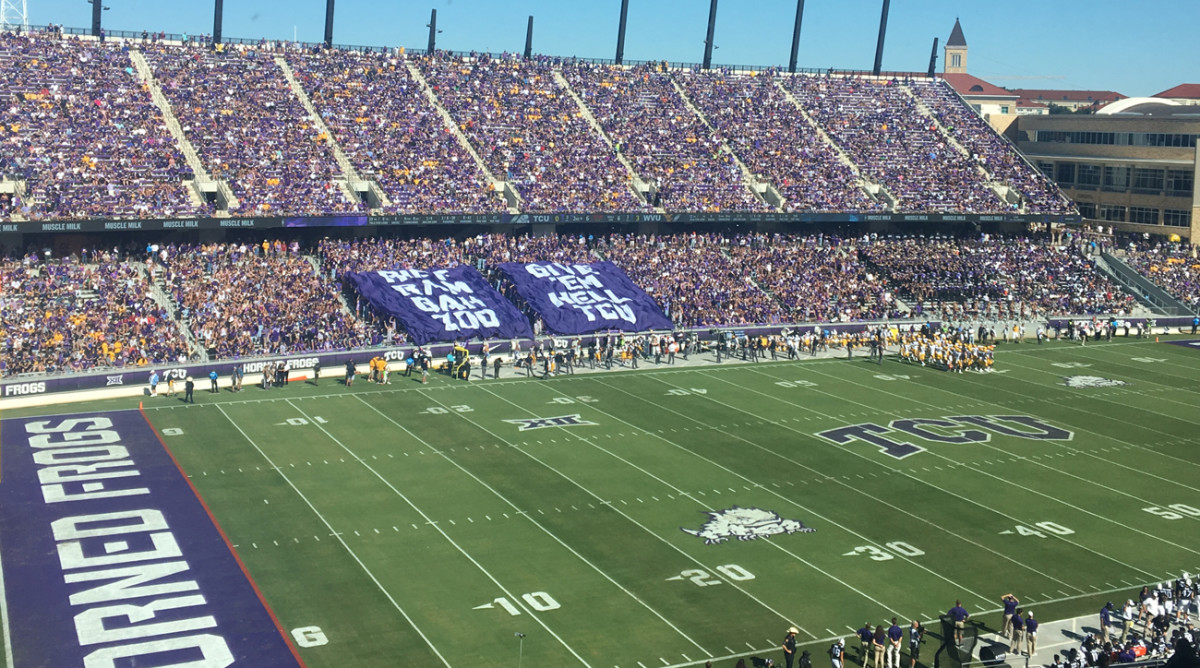
The next day, the AP Top 25 Poll would rank the Horned Frogs No. 6 in the nation, 18 slots in front of any other school in Texas.
“We’ve got a long ways to go,” Tomlinson says, “but so far we have done a great job of proving we are one of the best teams, if not the best team, in Texas.”
THE SPOTLIGHT ON AMERICA’S TEAM
AT&T Stadium, Arlington, Texas
Sunday, 3:25 p.m.
Three hours before kickoff, Jonathan Evans arrives at the players’ entrance of AT&T Stadium. He grew up in the Dallas area, played fullback at Baylor and was signed by the Cowboys as an undrafted free agent in 2005. Now he plays an entirely different role for the team—he’s the chaplain.
Between the previous night’s chapel service and the pregame prayer he’ll lead in the locker room today, Evans chooses a message that he hopes will resonate with the players and coaches as they play a Week 5 game against Green Bay.
“We talked last night about being able to walk on top of your circumstances,” Evans says. “We were talking about Peter walking on water with Jesus, and how he was walking on top of his circumstances. A lot of these guys feel a lot of pressure, with the game they play, they want to be able to perform. But we want them to walk on top of that pressure, knowing that if they just focus on Jesus who is up there, everybody else will be satisfied.”
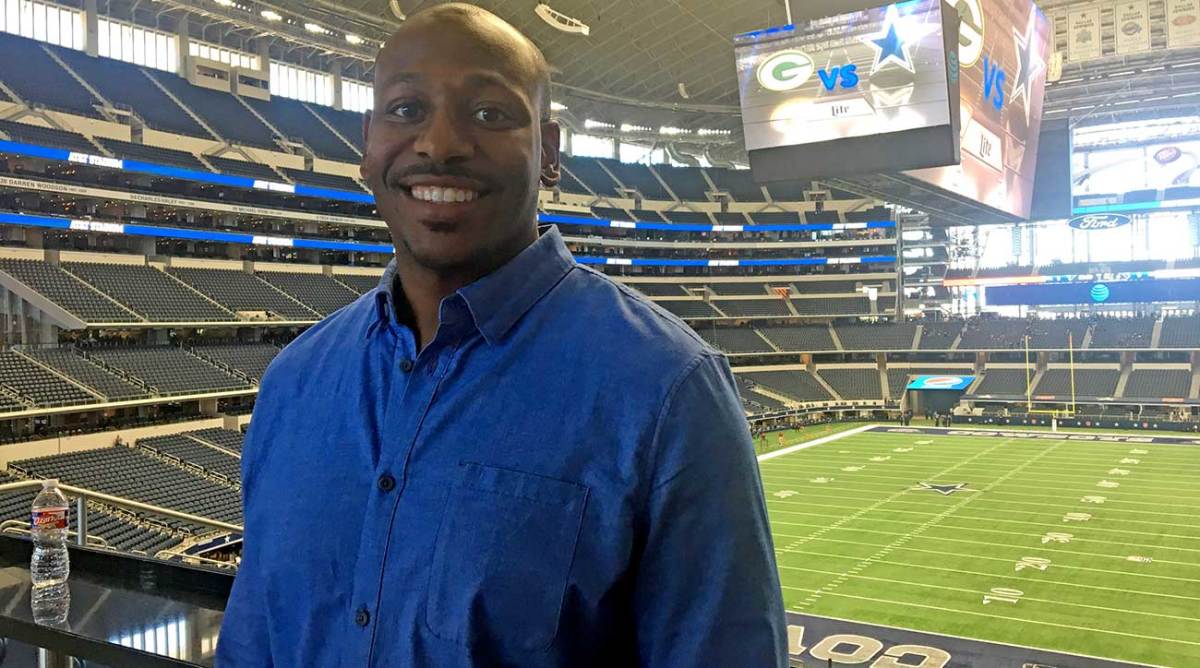
Faith and football are intertwined in many communities across the United States, and this is certainly true in Texas: from the BALLAS, to the invocation prayer delivered before kickoff at Texas Christian, to the 25 to 30 Cowboys players and coaches who regularly attend the non-denominational chapel service the night before each game—among them, Dak Prescott, Jason Witten, Dez Bryant and Ezekiel Elliott.
The Cowboys enter this game 2-2, a relatively disappointing start after last season’s 13-3 finish. No one is praying for a win—at least not Evans—but instead he uses faith to help players and coaches push through setbacks, learn from mistakes on and off the field and confront high expectations.
“It’s America’s team, so there is a lot of pressure to live up to that standard,” Evans says. “Once they sign a deal with the Dallas Cowboys, they understand this is as big as it gets. But I want them to understand there’s a bigger focus.”
On this afternoon, the Packers get the best of the home team, with a 35-31 win over the Cowboys after a masterly two-minute drive led by Aaron Rodgers. The Cowboys drop to 2-3. After the game, the scrutiny on America’s team only intensifies when owner Jerry Jones tells reporters that he will bench any player who demonstrates during the national anthem—further elevating a story that has already moved far beyond the NFL to become one of the most volatile political issues in America in 2017.
They say everything’s bigger in Texas, and a lot of that may be bragging. But from the thousand-dollar grills towed into tailgates on the beds of pickups to the spotlight cast on Dallas’s pro team, it’s definitely true of the place of football in people’s lives.
Question or comment? Email us at talkback@themmqb.com.
